Grumichama, Brazil-cherry
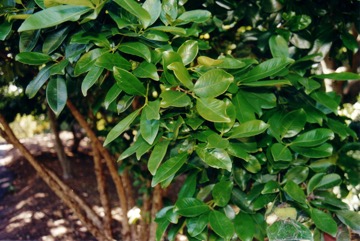
A tropical plant. It grows in humid tropical and subtropical regions. It can grow in the lowlands and highlands. It can survive temperatures down to -3°C for short periods. It requires neutral soils as both acid and alkaline soils cause leaves to turn yellow due to mineral deficiencies. It requires plenty of moisture. Optimum rainfall is 1,200-2,500 mm. It cannot tolerate drought. Young plants benefit from shade until established. It suits hardiness zones 9-12.
Also known as:
Amla, Aula, Cerisier de Brazil, Cumbixaba, Grumixaba, Grumixama, Grumixameira, Guamichama, Ibaporoti, Oula, Pohon jambu brazil, Sinaili
Synonyms
- Eugenia bracteolaris Lam. ex DC.
- Eugenia dombeyi (Sprengel) Skeels
- [Illegitimate] Eugenia filipes Baill.
- Eugenia ubensis Cambess
- Myrtus dombeyi Spreng.
- [Illegitimate] Myrtus grumixama Vell.
- Stenocalyx brasiliensis (Lam.) O. Berg
- Stenocalyx ubensis (Cambess.) O. Berg
Edible Portion
- Fruit
Where does Grumichama grow?
Found in: Africa, Amazon, Angola, Asia, Australia, Brazil, Cameroon, Central Africa, Central America, Costa Rica, Cuba, Fiji, Hawaii, Honduras, Indonesia, Jamaica, Mauritius, Mexico, New Zealand, North America, Pacific, Paraguay, Peru, Philippines, Puerto Rico, Sao Tome and Principe, SE Asia, Singapore, South America, Taiwan, United States
Notes: There are about 550 Eugenia species. They are mostly in tropical and subtropical South America.
Status: It is a cultivated tree. The fruit are popular.
Growing Grumichama, Brazil-cherry
Cultivation: Plants are normally grown from seed. Seeds can remain viable for several weeks. Seedlings take 2-3 years to start flowering. Seeds take about one month to germinate. A spacing of 4 m between trees is suitable. Little pruning is necessary. Plants can also be grafted. Plants are best grown from vegetative cuttings to preserve fruit quality.
Edible Uses: Fruit can be eaten fresh when ripe. It is used for pies or jam when half ripe.
Production: Trees take four or five years to start producing fruit. Fruit takes one month to mature after flowering. Fruit weigh 3-5 g.
Nutrition Info
per 100g edible portion| Edible Part | Energy (kcal) | Protein (g) | Iron (mg) | Vitamin A (ug) | Vitamin c (mg) | Zinc (mg) | % Water |
|---|---|---|---|---|---|---|---|
| Fruit | 53 | 0.6 | 0.5 | 30 | 19 | - | 85.3 |
Grumichama, Brazil-cherry Photos

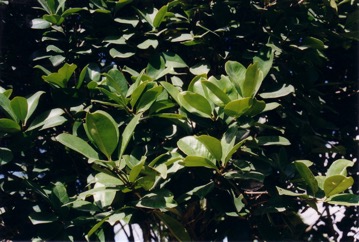
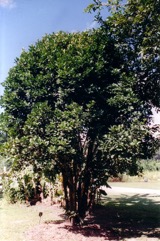
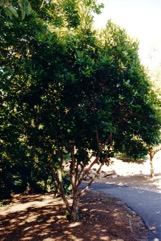
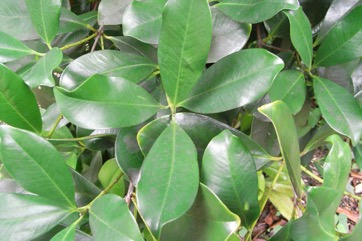
References
Alimenticias - FloraSBS
Bodkin, F., 1991, Encyclopedia Botanica. Cornstalk publishing, p 458
Burkill, I.H., 1966, A Dictionary of the Economic Products of the Malay Peninsula. Ministry of Agriculture and Cooperatives, Kuala Lumpur, Malaysia. Vol 1 (A-H) p 976
Cavalcante, P.B. 1991. Frutas comestíveis da Amazônia. Edições CEJUP. (As Eugenia dombeyi)
Coronel, R.E., 1982, Fruit Collections in the Philippines. IBPGR Newsletter p 6 (As Eugenia dombeyi)
Darley, J.J., 1993, Know and Enjoy Tropical Fruit. P & S Publishers. p 130
Ebert, A.W., & Ebert, I. C. M., 2011, Brazil cherry (Eugenia dombeyi) - an underutilized fruit species of the American tropics. Fruits, Vol. 66, p. 217-223
Etherington, K., & Imwold, D., (Eds), 2001, Botanica's Trees & Shrubs. The illustrated A-Z of over 8500 trees and shrubs. Random House, Australia. p 311
Facciola, S., 1998, Cornucopia 2: a Source Book of Edible Plants. Kampong Publications, p 157 (As Eugenia dombeyi)
Fouqué, A., 1972, Espèces fruitières d'Amérique tropicale. Institut français de recherches fruitierès outre-mer (As Eugenia dombeyi)
Garner, R.J., and Chaudhri, S.A., (Ed.) 1976, The Propagation of Tropical fruit Trees. FAO/CAB. p 344 (As Eugenia dombeyi)
Grandtner, M. M. & Chevrette, J., 2013, Dictionary of Trees, Volume 2: South America: Nomenclature, Taxonomy and Ecology. Academic Press p 236
Hedrick, U.P., 1919, (Ed.), Sturtevant's edible plants of the world. p 296
Hermandez Bermejo, J.E., and Leon, J. (Eds.), 1994, Neglected Crops. 1492 from a different perspective. FAO Plant Production and Protection Series No 26. FAO, Rome. p16
Hibbert, M., 2002, The Aussie Plant Finder 2002, Florilegium. p 99
Hunter, D., et al, 2019, The potential of neglected and underutilized species for improving diets and nutrition. Planta (2019) 250:709-729
INFOODSUpdatedFGU-list.xls (As Eugenia dombeyi)
Jansen, A. A. J., et al, (Eds), 1990, Food and Nutrition in Fiji. Volume One. p 43
Jardin, C., 1970, List of Foods Used In Africa, FAO Nutrition Information Document Series No 2.p 135 (As Eugenia dombeyi)
John, L., & Stevenson, V., 1979, The Complete Book of Fruit. Angus & Robertson p 286 (As Eugenia dombeyi)
Kiple, K.F. & Ornelas, K.C., (eds), 2000, The Cambridge World History of Food. CUP p 1782 (As Eugenia dombeyi)
J. B. A. P. M. de Lamarck & L. A. J. Desrousseaux, Encycl. 3:203. 1789
Le Bellec, F et V. Renard. 1997. Le grand livre des fruits tropicaux. Orphie ed.
Llamas, K.A., 2003, Tropical Flowering Plants. Timber Press. p 285
Lorenzi, H., 2002, Brazilian Trees. A Guide to the Identification and Cultivation of Brazilian Native Trees. Vol. 01 Nova Odessa, SP, Instituto Plantarum p 274
Lorenzi, H., Bacher, L., Lacerda, M. & Sartori, S., 2006, Brazilian Fruits & Cultivated Exotics. Sao Paulo, Instituto Plantarum de Estuados da Flora Ltda. p 191
Martin, F.W., C.W. Campbell and R.M. Ruberté, 1987, Perennial edible fruits of the tropics - An inventory. United States Department of Agriculture, Agricultural Research Service, Agriculture Handbook No. 642. Washington, D.C., USA (As Eugenia dombeyi) p 40
Miguel, E., et al, 1989, A checklist of the cultivated plants of Cuba. Kulturpflanze 37. 1989, 211-357 (As Eugenia dombeyi)
Morton, Julia F., 1987, Fruits of Warm Climates. Creative Resources Systems, Inc. . p. 390
Paz, F. S., et al, 2021, Edible Fruit Plant Species in the Amazon Forest Rely Mostly on Bees and Beetles as Pollinators. Journal of Economic Entomology, XX(XX), 2021, 1–13
PROSEA (Plant Resources of South East Asia) handbook, Volume 2, 1991, Edible fruits and nut. p 98 (As Eugenia dombeyi)
Recher, P, 2001, Fruit Spirit Botanical Gardens Plant Index. www.nrg.com.au/~recher/ seedlist.html p 2 (As Eugenia dombeyi)
Segura, S., et al, 2018, The edible fruit species in Mexico. Genet Resour Crop Evol (2018) 65:1767–1793
Silva, S y H. Tassara.1996. Frutas no Brasil. Empresa das Artes. São Paulo (As Eugenia dombeyi)
Staples, G.W. and Herbst, D.R., 2005, A tropical Garden Flora. Bishop Museum Press, Honolulu, Hawaii. p 423
Sukarya, D. G., (Ed.) 2013, 3,500 Plant Species of the Botanic Gardens of Indonesia. LIPI p 274
Tankard, G., 1990, Tropical fruit. An Australian Guide to Growing and using exotic fruit. Viking p 44
USDA, ARS, National Genetic Resources Program. Germplasm Resources Information Network - (GRIN). [Online Database] National Germplasm Resources Laboratory, Beltsville, Maryland. Available: www.ars-grin.gov/cgi-bin/npgs/html/econ.pl (10 April 2000)
van Wyk, B., 2005, Food Plants of the World. An illustrated guide. Timber press. p 192 (As Eugenia dombeyi)
Vivien, J., & Faure, J.J., 1996, Fruitiers Sauvages d'Afrique. Especes du Cameroun. CTA p 235
World Checklist of Useful Plant Species 2020. Royal Botanic Gardens, Kew
www.colecionandofrutas.org
www.tradewindsfruit.com
www.worldagroforestrycentre.org/treedb/ (As Eugenia dombeyi)